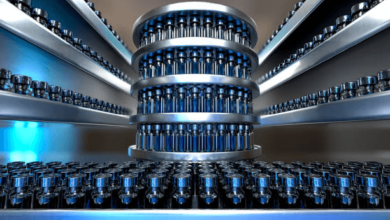SPD Electrical Definition and Its Relevance in Contemporary Power Systems

Protection of electrical assets in commercial and industrial settings is critical to business continuity and safeguarding equipment. This substantially protective scope of work is achieved through the advanced holistic use of Surge Protective Devices (SPDs). Knowing the SPD electrical definition and its modern day significance in power systems enables businesses to smartly protect their assets.
This article offers B2B companies a strategic guide which details what SPDs are, their significance and the importance of partnering with a surge protection company to enhance system reliability. This does not matter whether one’s vertical is manufacturing, energy, telecom or infrastructure, all SPBs will strategically rethink their need assessment for optimal surge protection solutions.
What Does Electrical Systems SPD Stand For?
And it is officially defined as a Surge Protective Device. Simplifying it, SPDs are used to safeguard electric systems and other equipment components against overvoltages (power surges). Such spikes may be caused due to lightning strikes, switching in power grids, equipment cycling, or even internal faults.
When a surge takes place, an SPD redirects the excess energy to the grounding system, which is away from critical equipment. This action is taken in milliseconds and prevents serious damage to machines, servers, or communication systems.
SPDs are placed throughout the electrical system in accordance with the risk profile and sensitivity of the equipment. The following are the categories of SPDs:
- Type 1: Great for protection against direct lightning strikes. Installed at the service entrance.
- Type 2: Positioned at distribution panels. Provides protection from residual surges.
- Type 3: Fine protection. Used near sensitive equipment, such as computers or control panels.
It is important for facility managers, engineers, and purchasing officers working with any surge protection company to understand the meaning and function of SPD electrical in order to design systems that are safe and compliant.
Why Surge Protection Is Crucial For Businesses
Organizations overlook the fact that power surges are more destructive and frequent. Even small surges can slowly damage the internal parts of sensitive machinery, which can lead to a degraded performance and early malfunction.
For sectors like manufacturing, healthcare, finance, and transport, surge-damage related downtime can mean millions in lost income. Even worse, some surges if inadequately alleviated can lead to fires or electrocution.
The implementation of SPDs is not solely a protective measure, but rather a strategy to ensure business continuity. It provides:
- Equipment Life Extension: The prevention of increased depreciation due to voltage spikes.
- Stability: The preservation of unanticipated system shut-downs and reboots.
- International Compliance: Adherence to required safety codes and standards set by international regulations.
- Reduced Insurance Risks: Improvement in risk profiles which impacts premiums and liability coverage.
A qualified surge protection company will evaluate your facility’s specific areas of concern and build a detailed custom surge protection plan tailored to mitigate those risks.
Adding SPDs Into Contemporary Power Systems
Simply buying and installing a SPD does not complete the process of adding it to a commercial or industrial power system. There is a need for a more holistic approach, integrating it into the power distribution framework.
Things To Consider:
- Main Service Entrance: A crucial point for Type 1 SPDs to prevent surges from utility lines.
- Distribution Panels: Where Type 2 SPDs deal with surges within the circulation of the facility.
Terminals Equipment: Control systems integrated into medical devices, computers, and servers are all protected under type 3.
Data and Communication Lines: Telephone lines, coaxial and ethernet, are particularly sensitive and make use of Data SPD protection.
The latest SPDs can now track surge events, alert users remotely, and monitor device health. These features are especially advantageous for large facilities or spread out networks where manual checks are impossible.
To ensure that there is no protection loophole, SPDs selection, placement and coordination need to be precise. This is why partnering with a reliable surge protection company becomes essential.
Choosing The Right Partner
A reliable surge protection company must have established credibility when it comes to dealing with surge protection. Their expertise and quality service is a surefire recipe for success.
Tip on choosing a supplier:
- Technical Consultation: The company does not merely give out products. Providers are supposed to aid with the planning and layout of the system.
- Compliance and Certification Standards: Global benchmarks such as IEC 61643, UL 1449, or EN standards that are devices have to be provided with must be met.
- Customization Flexibility: No two fire stations are the same. SPD spatial solutions may be needed for specific profile voltages, environmental conditions, or system architectures.
- Sales Support After Offer: From post-installation support to active system maintenance, strong support helps in ensuring long-term reliability.
- Scalability and Delivery: Check whether the supplier meets small project goals as efficiently as they would with large scale projects.
It is surmised that if armed with a reputable and protected surge company, whose aid in surge mitigation is guaranteed to be well prepared and tailored with consideration to short or long term utilization spells out the difference.
In other words, having some knowledge on the meaning of SPD electrical the right surge protection company makes all the difference between a resilient system or constant system failure.
See also: Experienced Electricians: Your Go-To Service for All Electrical Needs
Monitoring and Maintenance: How To Make Surge Protection Work
SPDs are one of the components in an electrical system that can easily be labeled as a set and forget device, which it is not. They require endless maintenance to remain effective.
Best strategies include:
- Have Regular Inspections: Inspect all indicators for lights working issues, signs of damage and wounds or inflicting bruises.
- Tautological Group of Words: Use tools designed to measure clamping voltage, response time and discharge capacity, for interfacing.
- Replacements Policies: Most SPDs contain a finite lifecycle to them. Keep records on the amount of surge through a certain time and plan replacements ahead.
- Conservation Measures: Take care to keep the faces of the enclosures closed, especially in dusty and humid environments, to prevent degradation acceleration.
Following an appropriate maintenance procedure not only maintains the protection level but also fulfills safety and insurance requirements. A good surge protection company will have the requisite equipment and expertise to handle SPD maintenance effectively.
Summary
Knowing what the acronym SPD electrical meaning refers to is important for any organization intending to safeguard its assets and maintain operational uptime within today’s power-sensitive business environment. SPDs stand as the first line of defense against erratic voltage surges which can disrupt normal functioning, damage sensitive and costly equipment, and endanger the personnel working on them.
The incorporation of SPDs into one’s power system should be regarded as a tactical business decision that enhances reliability, compliance, and protection from potential losses. To achieve desired results, however, partnering with a seasoned surge protection company offering proper guidance, certified surge protective devices, and comprehensive support is indispensable.
With the continued digitization of industries, coupled with the increasing intricacy of electrical loads, the need for surge protection will be paramount. Evaluate your systems now to ensure they are capable of enduring the unexpected.




